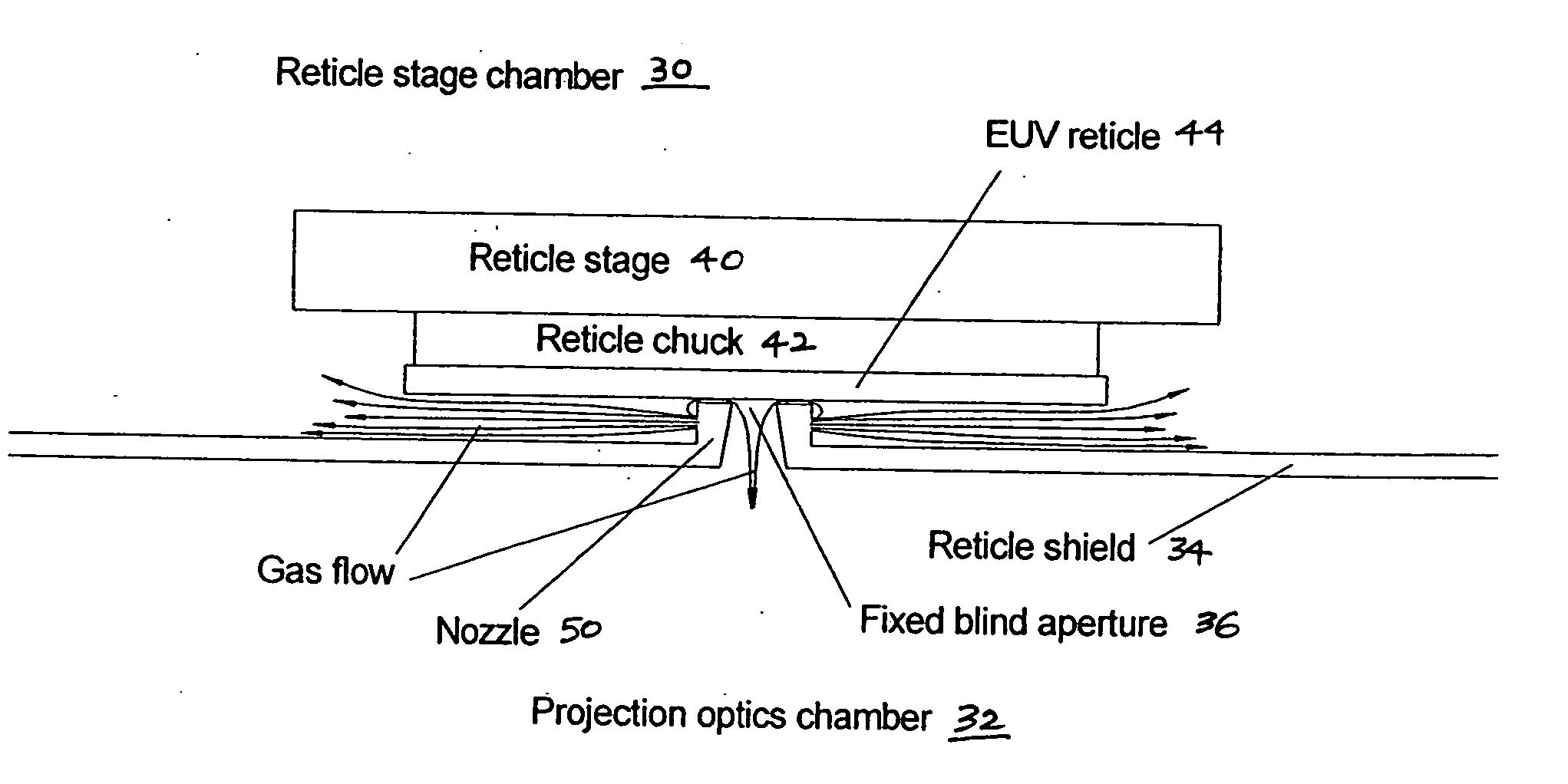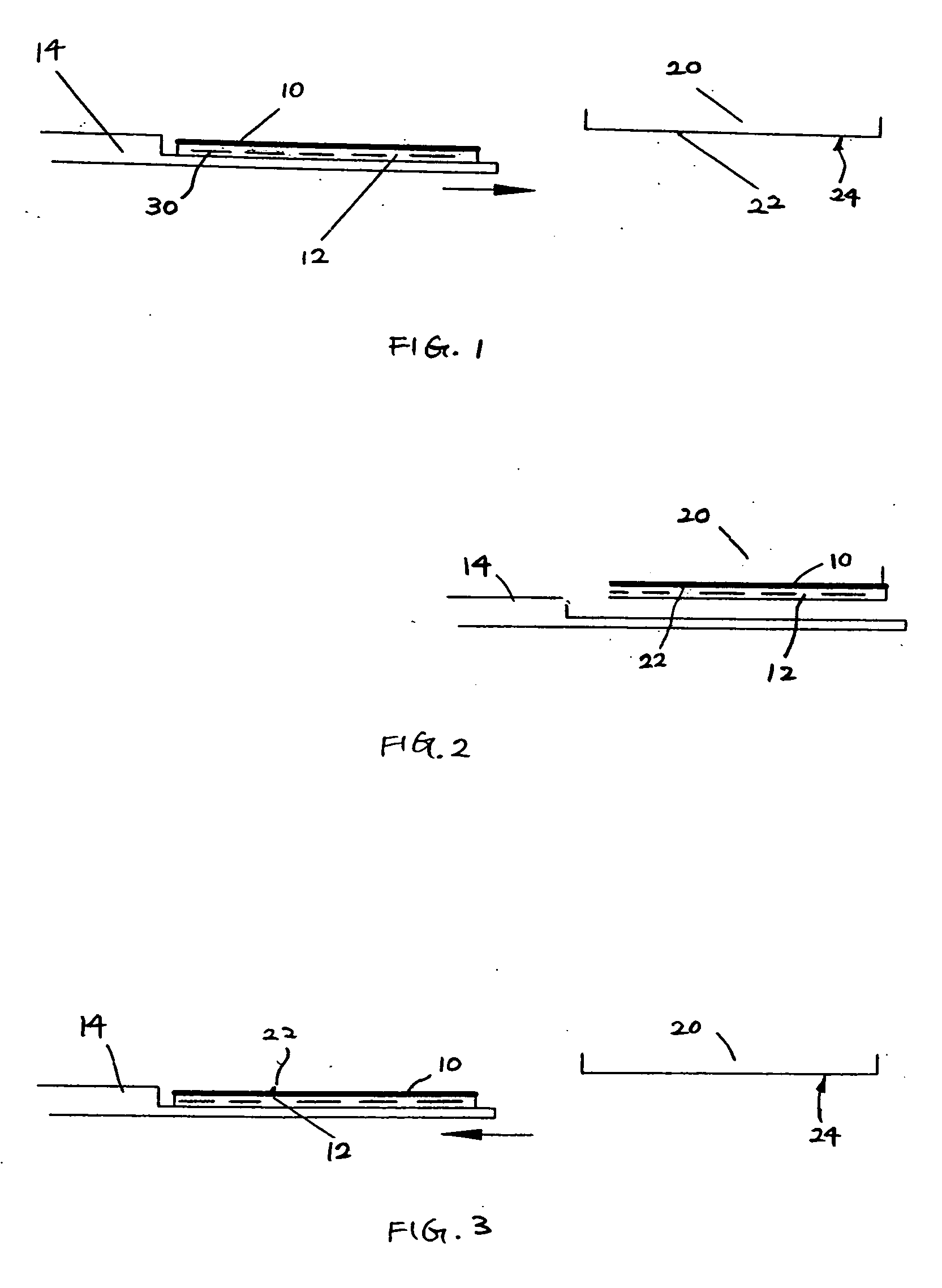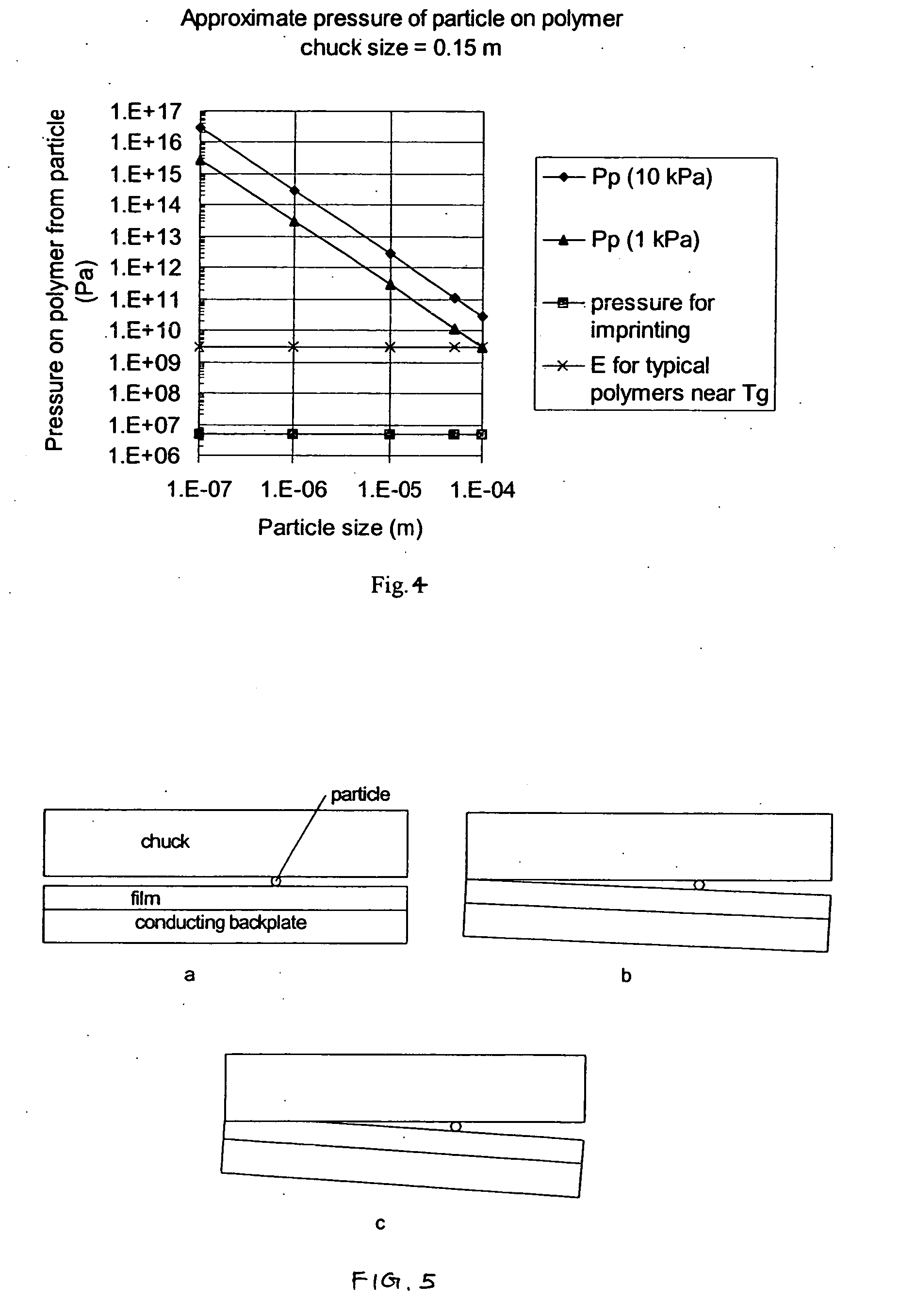Cleaning chuck in situ
a technology of in situ cleaning and chucks, applied in the field of in situ cleaning of chucks, to achieve the effect of facilitating separation from polymer
- Summary
- Abstract
- Description
- Claims
- Application Information
AI Technical Summary
Benefits of technology
Problems solved by technology
Method used
Image
Examples
Embodiment Construction
[0022]FIG. 1 shows a cleaning film or layer 10 disposed on a substrate such as a “dummy” reticle 12 which is placed on a transport mechanism such as an end effector 14. The cleaning film 10 may be provided on the substrate 12 by forming thereon or attaching thereto using any suitable technique, including deposition, molding, plating, bonding, joining, and the like. The end effector 14 may be one that is normally used to deliver an actual process reticle to the chuck for clamping. FIG. 1 shows a chuck 20 with a particle 22 disposed at the bottom surface 24 thereof.
[0023] In FIG. 2, the end effector 14 moves the dummy reticle 12 with the cleaning film 10 below the bottom surface 24 of the chuck 20, and the dummy reticle 12 is clamped to the chuck 20 with the cleaning film 10 placed in contact with the bottom surface 24 of the chuck 20. If the chuck 20 is an electrostatic chuck, the electrostatic clamping feature may be activated to clamp or press the dummy reticle 12 with the cleanin...
PUM
 Login to View More
Login to View More Abstract
Description
Claims
Application Information
 Login to View More
Login to View More - R&D
- Intellectual Property
- Life Sciences
- Materials
- Tech Scout
- Unparalleled Data Quality
- Higher Quality Content
- 60% Fewer Hallucinations
Browse by: Latest US Patents, China's latest patents, Technical Efficacy Thesaurus, Application Domain, Technology Topic, Popular Technical Reports.
© 2025 PatSnap. All rights reserved.Legal|Privacy policy|Modern Slavery Act Transparency Statement|Sitemap|About US| Contact US: help@patsnap.com



